How much faster could an IMOCA 60 go if it were really pressed? Not in bursts, not for brief peak speeds, but at a sustained average pace over days or more. In other words, how much faster would they go if they could be pushed harder, for longer, than a single-handed sailor could cope with at one stretch?
It’s a question that has been discussed for some time, even more so since the 60-footers started to fly five years ago. Vendée Globe sailors frequently comment that they’re often sailing their boats at well below 100%, because they simply cannot keep up the intensity of going full-bore when they’re sailing alone. But if you could keep your foot hard to the floor, day in, day out – just as a full crew would be able to – how much faster would one of these globe scorching monohulls go? And would their notoriously fragile structures be able to stand the pace?
As soon as The Ocean Race organisers announced that the IMOCA 60 fleet would be invited to join the VO65s in the fully crewed multi-stage race around the world (formerly the Volvo Ocean Race), speculation ramped up. How could you fit a full crew into a boat designed for one or occasionally two? Just how many people is ‘fully crewed’ anyway? What would the crew roles be? And what would you do about the autopilot? Many of the top solo sailors point to the fact that their advanced pilot systems can now steer an IMOCA 60 faster than a human at times. Putting a full crew on board, along with the associated weight of people and provisions, and then making them hand steer, could actually slow the boats down. (Come The Ocean Race, autopilots will be allowed on the IMOCA 60s although details as to the limit of the pilot’s intelligence are still being discussed.)
Diese Geschichte stammt aus der September 2021-Ausgabe von Yachting World.
Starten Sie Ihre 7-tägige kostenlose Testversion von Magzter GOLD, um auf Tausende kuratierte Premium-Storys sowie über 8.000 Zeitschriften und Zeitungen zuzugreifen.
Bereits Abonnent ? Anmelden
Diese Geschichte stammt aus der September 2021-Ausgabe von Yachting World.
Starten Sie Ihre 7-tägige kostenlose Testversion von Magzter GOLD, um auf Tausende kuratierte Premium-Storys sowie über 8.000 Zeitschriften und Zeitungen zuzugreifen.
Bereits Abonnent? Anmelden
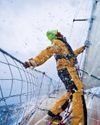
5 EXPERT TIPS BOB BEGGS ON SAILING IN COLD WEATHER
As temperatures drop, Andy Rice gets tips on how to handle the cold from self-confessed Arctic weather fan and winning Clipper Round the World Race skipper Bob Beggs
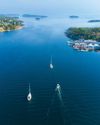
SPECIAL REPORT EXTENDED CRUISING IN THE BALTIC
Sweden offers cruisers a warm welcome for winter - Janneke Kuysters has advice on how to boost your sailing time in the region

NIKKI HENDERSON
SEARCHING FOR MORE SPEED? BEFORE TINKERING WITH TINY ADJUSTMENTS, MAKE SURE YOU'VE GOT THE BASICS RIGHT THE POWER DRIVING THE BOAT

MATTHEW SHEAHAN
WHAT WILL THE BOATS OF THE 38TH AMERICA'S CUP LOOK LIKE? THAT'S THE $20 MILLION QUESTION IF BRITAIN OR NEW ZEALAND DECIDE TO DEPART FROM THE AC75
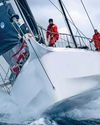
60-knot squalls hit Middle Sea Race
The 45th running of the Mediterranean offshore, the Rolex Middle Sea Race, saw a spectacularly random mix of conditions - even for a race which is famed for its variable weather patterns.
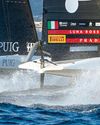
Italy win first Women's Cup
The first ever Women's America's Cup was won by Luna Rossa Prada Pirelli after a single, twoboat shoot-out final on 12 October.

'Three-peat' for ETNZ
As Defender, Emirates Team New Zealand came into this year's 37th America's Cup as clear favourites. But the Kiwi camp has far more than just the structural advantage of being the ones that wrote the Protocol for the competition, and the originators of the AC75 concept.
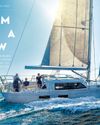
ROOM WITH A VIEW
SWEDISH DESIGNER GABRIEL HEYMAN POURED A LIFETIME OF IDEAS INTO THIS PILOT SALOON CRUISER, WHICH INCLUDES ARGUABLY THE LARGEST COCKPIT AVAILABLE AT THIS SIZE
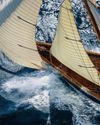
LIVING HISTORY
THE ICONIC SEASON-CLOSING REGATTA LES VOILES DE SAINT TROPEZ WAS AN IMMERSIVE HISTORY LESSON FOR CROSBIE LORIMER
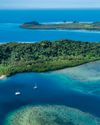
CHANGE OF PLAN
LEAVING AUSTRALIA, MARIANNE URTH NEVER PLANNED TO MAKE LANDFALL IN THE ISLANDS OF VANUATU, BUT THE EXPERIENCE WAS MAGICAL